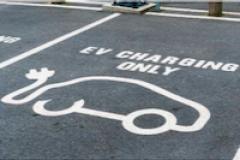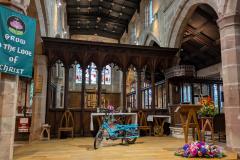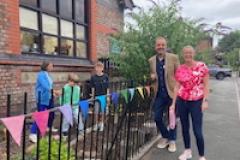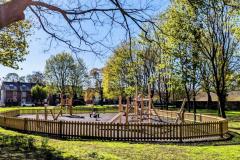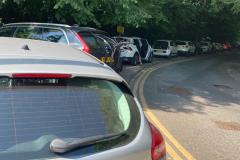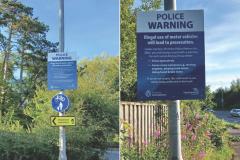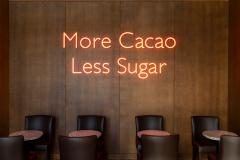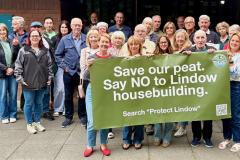Wilmslow resident Betty Oldham is celebrating her one hundredth birthday including with the famous card from the King and Queen. Hailing from Durham she first came to Wilmslow in 1944 as WAAF Aircraft Women 2nd Class Betty Matthews for three weeks induction training at RAF Wilmslow. The site is now home to Summerfields.
The Women's Auxiliary Air Force (WAAF) was formed in June 1939 when war seemed imminent. In its early years the members of the WAAF filled posts as drivers or kitchen orderlies, but as the war progressed roles diversified. By the Battle of Britain, less than a year after the outbreak of war, WAAFs were actively employed in plotting aircraft and radar signals, interpreting reconnaissance photographs, debriefing aircrew after raids, packing parachutes and running communications.
By the end of the war, members were involved in the interception of codes and cyphers, the interpretation of aerial photographs, the operation of balloon sites and many other important wartime jobs. A smart uniform, three weeks leave a year and free travel permits added to the volunteer's benefits even if food and amenities could frequently be stark and uncomfortable.
Betty said "I was at RAF Wilmslow to start my training in wireless telegraphy. While here we were signed to barracks and only let out on Saturdays and Sundays when we went for tea in the Rex or at the Mill Brow Mission on Mill Street. I was amazed there were people in the village from all round the world all in support of our Allied Cause.
"After Wilmslow the next part of my training was three months in Blackpool in a billet where we were packed in like sardines, five single beds in one room. The military had taken over many boarding houses but despite this, and it being wartime, there were still holiday makers about. In the streets there was a curious mix of off-duty service people in uniform, civilians and RAF personnel marching between classes. We were always in uniform, our training involved learning to read and send morse code. "
This achieved Betty was despatched for three months to Compton Bassett in Wiltshire where she became familiar with radios, valves and soldering so that repairs could be made in the field. The course also covered the procedures to communicate between the RAF stations and the WAAFs were given exercises in listening to transmissions to see if they had an aptitude to distinguish codes and patterns. Everything culminated in an exam, she passed this and became an Aircraft Women 1st Class.
"After qualifying my first deployment was to Four Group at RAF Marston Moor in Yorkshire in 1944, a base for Halifax bombers. Our work was to distribute messages between the RAF Bomber command stations in Yorkshire and Lincolnshire, our Marston Moor Commanding officer was Group Captain Leonard Cheshire VC.
The accommodation was corrugated Nissan huts which with a small stove and limited coke supplies were freezing in winter. After winter shifts we would retreat under the blankets in full uniform and great coats, not at all an exceptional in WW2, you just
had to do what you had to and get on with it.
"Next door in the skies over RAF Rufforth I saw bombers assembling for one of the thousand-bomber raids, they were so high you could not hear the engines they just looked like flies all swirling about. These raids were the first uses of bomber streams to overwhelm enemy radar and defences by flying in a narrow dense formation.
"While at Rufforth I met Jack Oldham, my husband to be, who had joined the RAF in 1939. During the Battle of Britain he was an electrician servicing hurricane fighters, he was there prior to going to South Africa for three years where the RAF were training pilots away from the combat zone."
Betty's next posting was to Bomber Command HQ at High Wycombe where operations were co-ordinated from "The Hole", an underground complex under a mound of earth packed full of offices, equipment and telephones. For effective co-ordination the United States Army Air Force HQ was next door.
The grounds of the HQ had extensive woodland and that year there was an explosion in squirrel numbers. One day Betty was starring up at the squirrels open mouthed and felt someone behind her and she commented on the numbers. The person agreed with her and talked about doing something about it.
"It was Bomber Harris head of Bomber Command, he was quite friendly" she said.
"Come 1945, I had a choice to make stay on or leave the RAF. After discussing it with Jack we decided to get married, as in those days if you were married you automatically left the service.So my final deployment was to Birmingham for demobbing."
Betty moved back to Wilmslow with her husband in 1957 to a new house very close to the former RAF Camp in Wilmslow. Now she can go into Wilmslow whenever she wants.
Betty was speaking to Jon Kelly as part of Wilmslow Historical Society's Wilmslow in WW2 Celebrations.


